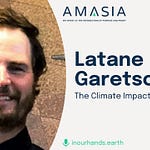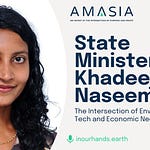In this episode of In Our Hands, Ramanan Raghavendran speaks with Miranda Massie, visionary driving force, founder, and director of New York City’s Climate Museum. They discuss her lifelong dedication to social equity and how it transfers to her work at the Climate Museum, where she harnesses the expressive power of art to explore the simplistic yet profound mechanics of global warming and the scalable impact the arts can have in furthering climate awareness.
Full transcript available above. This episode is also available on Apple Podcasts and Spotify.
In Our Hands is a production of Amasia. Follow these links for more about our firm, the Amasia blog, our climate fiction podcast, and Ramanan’s blog.
Highlights
(02:04) Miranda’s early life and education
(06:29) How fossil fuels disrupt weather systems
(7:20) The inspiration behind The Climate Museum
(11:14) The power of art in creating emotional connections and empowering action
(14:20) Community and creativity
(19:24) The Climate Museum: Future vision
(23:36) How to find out more about the museum











